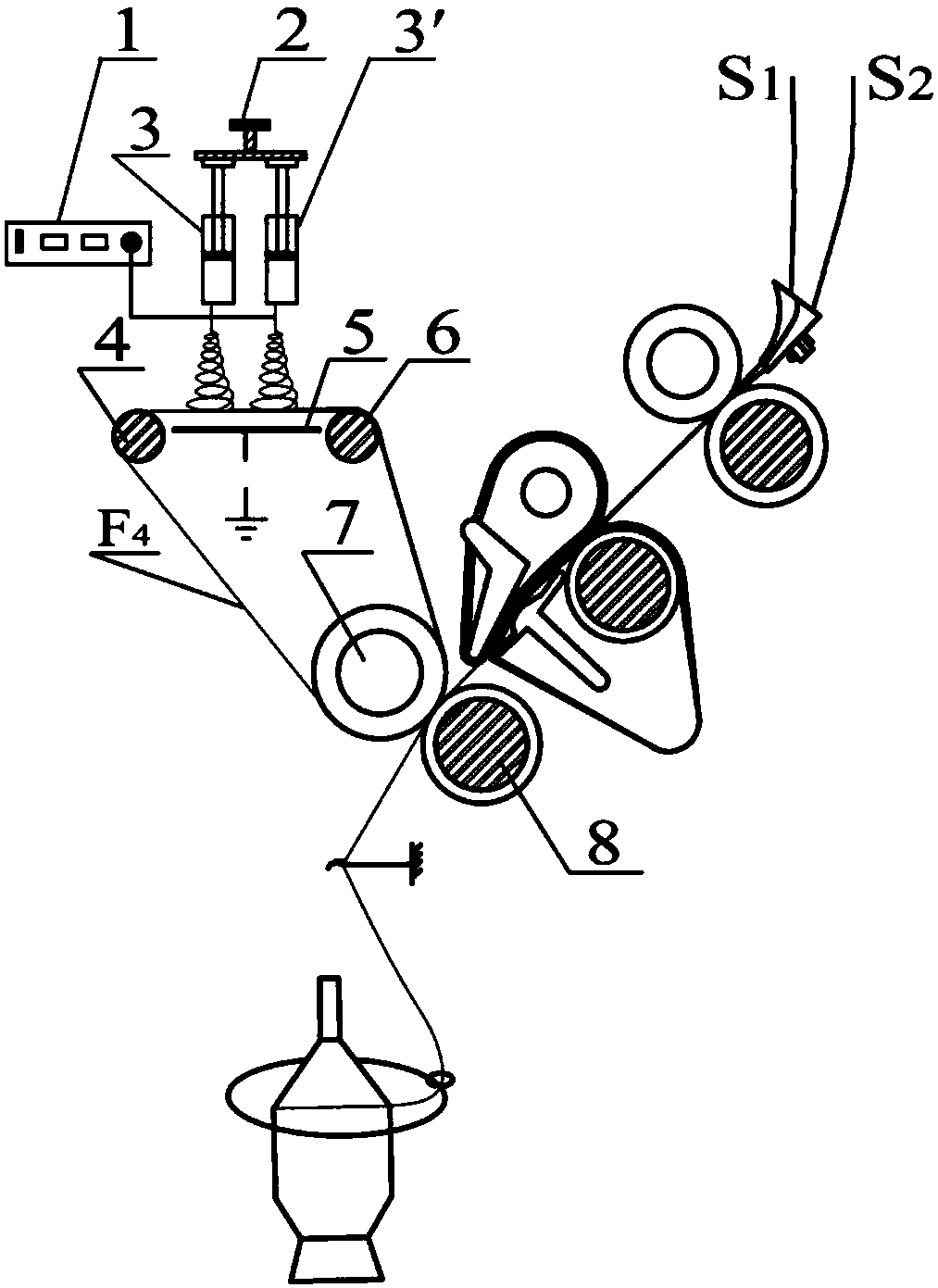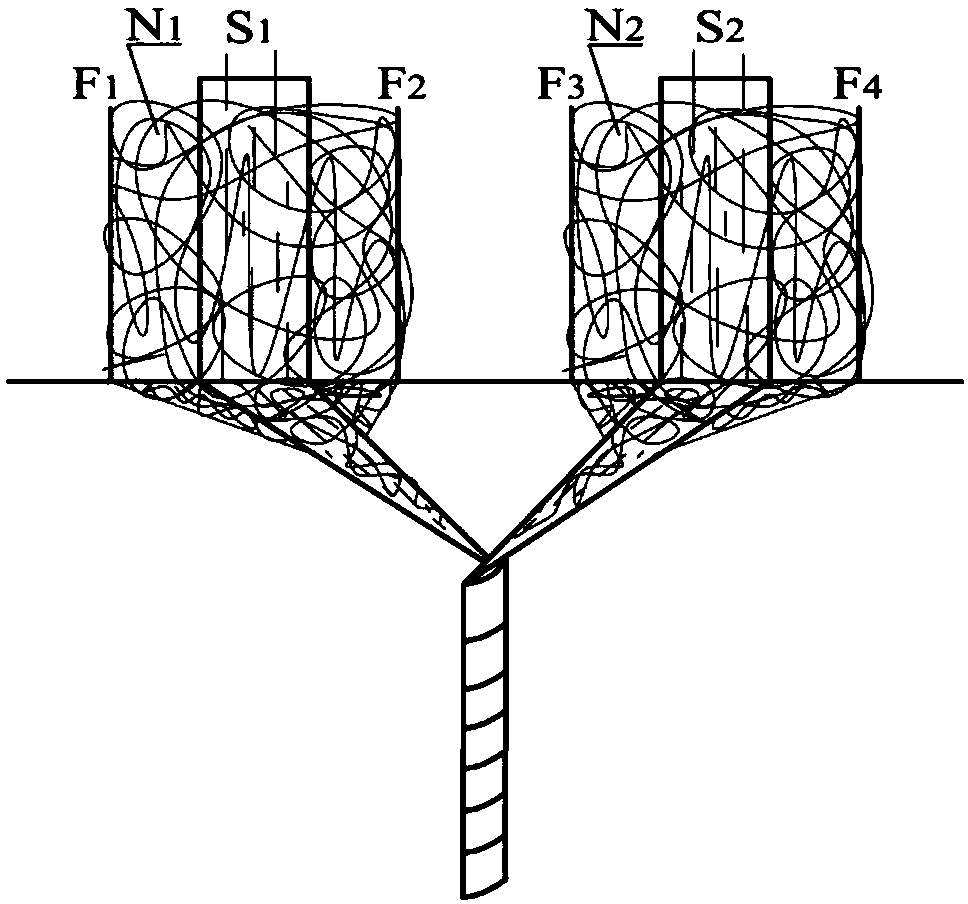A kind of siro spinning method for nano and micro-scale reinforced short fiber yarn
A technology of siro spinning and staple fiber, which is applied in the field of siro spinning, and can solve problems such as the inability to realize high-function, high-quality nanocomposite yarn production and processing, low absolute fiber strength, and narrow processing and application range.
- Summary
- Abstract
- Description
- Claims
- Application Information
AI Technical Summary
Problems solved by technology
Method used
Image
Examples
Embodiment Construction
[0011] A siro-spinning method of the present invention for forming nano- and micro-scale reinforced short fibers into yarns will be further described in detail in conjunction with the accompanying drawings.
[0012] see Attachment.
[0013] Aiming at the technical problems of insufficient cohesion between fibers and nanofibers that have not yet achieved high-function and high-quality nano-yarn production during short-fiber siro spinning, the present invention adopts each drafting mechanism of the ring spinning frame, from the roving bobbin The two short-fiber rovings unwound from the tube pass through two bell mouths respectively, and are fed in parallel to the rear roller, rear top roller, middle roller, middle and lower apron, middle and upper apron, front roller 8, and front top roller 7. The drafting mechanism that forms, drafts and becomes short-fiber mustard S1 and short-fiber mustard S2, and short-fiber mustard S1 and short-fiber mustard S2 enter the front roller nip th...
PUM
 Login to View More
Login to View More Abstract
Description
Claims
Application Information
 Login to View More
Login to View More - R&D
- Intellectual Property
- Life Sciences
- Materials
- Tech Scout
- Unparalleled Data Quality
- Higher Quality Content
- 60% Fewer Hallucinations
Browse by: Latest US Patents, China's latest patents, Technical Efficacy Thesaurus, Application Domain, Technology Topic, Popular Technical Reports.
© 2025 PatSnap. All rights reserved.Legal|Privacy policy|Modern Slavery Act Transparency Statement|Sitemap|About US| Contact US: help@patsnap.com


